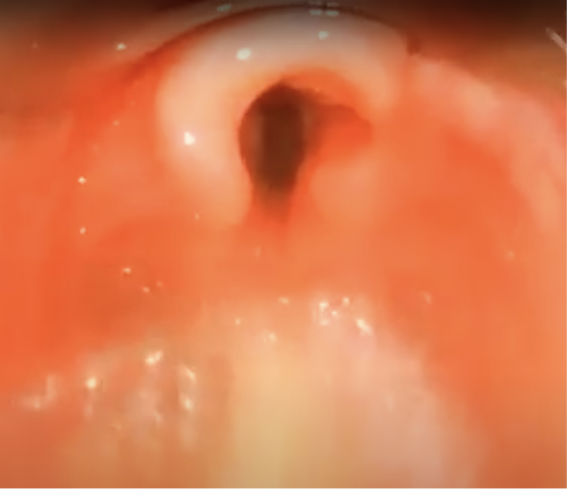
Image captured during laryngoscopy showing normal larynx anatomy in an infant. Note that the epiglottis is narrow, long, floppy and omega shaped. The vocal cords are shorter.
Other characteristics of pediatric larynx:
- Shape is conical compared to the cylindrical shape in adults.
- The larynx in infants and young children is located more anterior and superior compared with the adult’s.
- The narrowest portion of the pediatric airway was previously believed to be below the glottis at the level of the cricoid cartilage. However recent MRI studies report the narrowest portion of the pediatric airway to be at the level of vocal cords similar to adults.
The angle of tracheal bifurcation in infants and children is found to be approximately 80-110°. Hence the chances for mainstem intubation is equal on right and left. However, in adults the right bronchus is straighter (20°to right of midline) compared to the left bronchus (>35°to left of midline) increasing the chances for right mainstem intubation if the endotracheal tube is advanced beyond the carina.
Videos of pediatric airway intubations can be seen on the Pediatric Airway section of the Clinical Images/Video page.